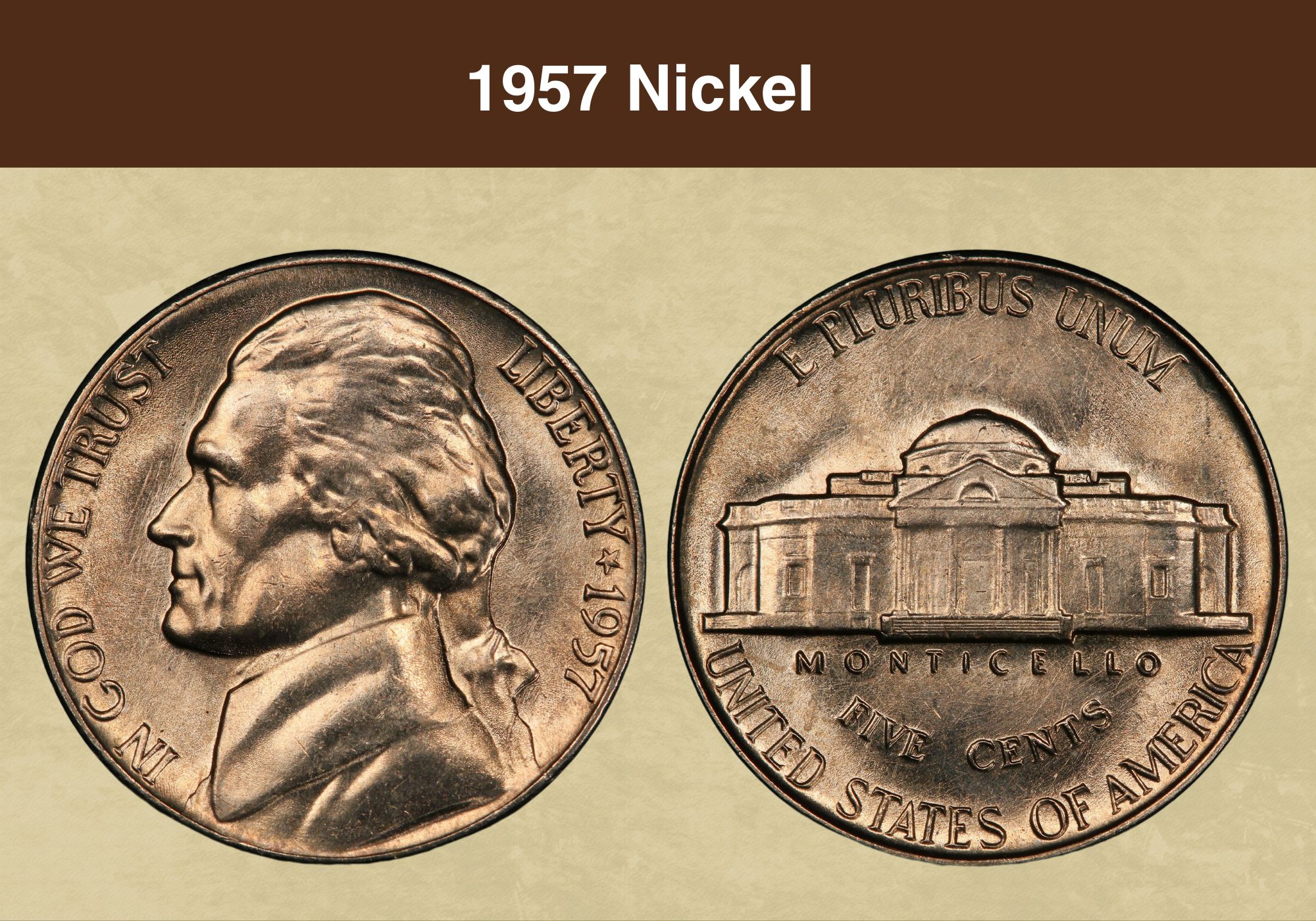
Coin Value Contents Table
Have you come across a 1957 nickel and wondered whether this coin is worth any money?
Perhaps you are interested in adding to your Jefferson coin collection and are curious about the 1957 nickel value.
This guide is for you!
The good news is that Jefferson nickels are quite collectible, and some rare coins are worth a premium if you know what to look for.
But, you should remember that the Mint struck millions of Jefferson nickels not just in 1957 but since the coin’s inception, making them very common. The upside is that you can easily afford 1957 Jefferson nickels if you are a new collector.
In this guide, we will explore: How much is a 1957 nickel? You will learn this coin’s value and grading tips and discover errors sometimes worth hundreds or thousands of dollars.
Without further ado, let’s get started!
1957 Nickel Value Chart |
||||
| Mint Mark | Good | Fine | Extremely Fine | Uncirculated |
| 1957 No-Mint Mark Nickel Value | $0.10 | $0.10 | $0.10 | $480 |
| 1957-D Nickel Value | $0.10 | $0.10 | $0.10 | $200 |
| 1957- Proof Nickel Value | – | – | – | $110 |
The History of the 1957 Nickel
The 1957 nickel belongs to the Thomas Jefferson nickel series, which began in 1938. The Jefferson nickel replaced the Buffalo or Indian Head nickel, which the United States Mint had struck since 1913.
Although the Buffalo nickel draws much admiration today, it was a problematic coin that was difficult for the Mint to strike. More Buffalo nickel’s high relief points wore out the dies, requiring the Mint to strike more dies to make these coins.
So, after 25 years of circulation, the Mint could replace the Buffalo nickel without congressional approval. Mint officials wasted no time and immediately called for a competition to find a designer for the next coin after the Buffalo nickel.
The Mint required the winner to design a nickel depicting the Founding Father and the third United States President, Thomas Jefferson, on the obverse. Ultimately, Felix Schlag, a sculptor who had immigrated to the U.S. from Germany nine years earlier, emerged as the competition’s winner.
After several reiterations, the Mint submitted the final designs to the Commission of Fine Arts. Even though the Commission’s chair, Charles Moore, was displeased with the position of Thomas Jefferson’s Monticello, the Mint overlooked his concerns and proceeded to mint the new Jefferson nickels.
By October 1938, the mints at Philadelphia, Denver, and San Francisco began striking the Jefferson nickels. In 1957, though, only the Denver and Philadelphia facilities produced nickels, with the Philly mint striking regular and proof coins.
Also read: Top 10 Most Valuable Nickels Worth Money
The Features of the 1957 Nickel
Whether you are a newbie collector or a veteran, it is important to familiarize yourself with a coin’s features. This way, you can identify 1957 nickels worth money or any other coin piques your interest.
Let’s look at the features of the 1957 Jefferson nickel:
The Obverse of the 1957 Nickel
The 1957 nickel resembles those of the previous years; the design didn’t change much.
Thomas Jefferson’s portrait takes up most of the surface on the obverse. In his left-facing profile, the president has his hair held back in a low ponytail while adorning a high coat collar.
The country’s motto, IN GOD WE TRUST, appears along the inner rim on the left. On the right, there’s the word LIBERTY and the year date, with a five-pointed star between them.
The Reverse of the 1957 Nickel
On the reverse of the 1957 nickel, you will find a depiction of Jefferson’s home, the Monticello, in all its glory.
In his earlier designs, Schlag had given the Monticello a slight side view, but the Mint suggested that the house face squarely forward.
Notice the stairs leading up to the home. Collectors often determine the value of a Jefferson nickel based on how clear-cut the stairs are; coins with visible stairs are considered more valuable.
The word MONTICELLO underscores the house it is named after, appearing at its foundation and across the coin’s surface.
Directly below, you will see the coin’s denomination, FIVE CENTS. The country’s name is shown along the inner rim at the bottom.
The motto E PLURIBUS UNUM appears at the top around the coin’s inner rim.
Other Features of the 1957 Nickel
The 1957 nickel is a fairly large coin measuring 21.20 millimeters and weighing 5 grams.
It is made of 75% Copper and 25% Nickel and has a plain edge.
Only the 1957 Jefferson nickels struck in Denver have a mint mark. You will find the mark D on the reverse next to Monticello’s wall on the furthest right.
Also read: Top 17 Most Valuable Buffalo Nickel Worth Money
1957 Nickel Grading
The 1957 nickel can be graded from Uncirculated to Good. Given that most of these coins were released into circulation and reveal a weak strike, they are not worth more than their face value.
Whether you are looking to buy or sell, your primary focus should be on uncirculated gems. These coins demonstrate full, continued luster from one end of the coin to the other.
Check that the delicate cover is intact on high spots such as the brow or just above Jefferson’s eye. Watch out to ensure no signs of dulling or smoothness along the collar on the obverse.
On the reverse, pay attention to the Monticello, particularly the triangles that make up the roof. The columns are also high points prone to dulling, as are the steps to the Monticello; confirm that a coin is in mint state by ensuring no signs of wear.
| # | Grade |
|---|---|
| 1 | Basal State-1 |
| 2 | Fair |
| 3 | Very Fair |
| 4, 5, 6 | Good |
| 7, 8, 10 | Very Good |
| 12, 15 | Fine |
| 20, 30 | Very Fine |
| 40 | Extremely Fine |
| 50 | About Uncirculated |
| 60 | Mint State |
| 65 | Mint State |
| 70 | Mint State |
Please check our grading guides to know your coin scale, It’s the necessary step to know the exact value of your coin.
Check out now: How to Grade Jefferson Nickel?
1957 Nickel Value Guides
In this section, we’ll answer the question: how much is the 1957 nickel worth?
The value of your 1957 Jefferson nickel will depend on several factors, such as the coin’s condition, mint mark (or a lack of it), rarity, and market demand.
The presence of full steps can also positively affect the value of your nickel.
There are three varieties of the 1957 nickel whose value we will explore below. The three include:
- 1957 No-Mint Mark Nickel
- 1957-D Nickel
- 1957 Proof Nickel
1957 No-Mint Mark Nickel Value
The mint in Philadelphia struck 38,400,000 Jefferson nickels in 1957.
Most of these coins were released into circulation and are quite common. Like the Jefferson nickels of the 1950s, the 1957 nickels show a weak strike.
The planchet reveals existing marks, resulting in deficient strikes. These coins were also struck on dark planchets, resulting in drab-looking 1957 no-mint mark nickel.
In circulated condition, you can expect between $0.10 and $0.20 for your 1957 nickel struck at the Philadelphia facility. Coins graded mint state or uncirculated are also equally affordable, with examples graded MS65 costing only $22.50 and $480 for specimens graded MS67.
If your 1957 nickel penny has full steps, consider yourself very lucky. Such coins are extremely rare and will fetch as much as $1,250 in the open market.
According to the Professional Coin Grading Service (PCGS), the most expensive 1957 no-mint mark nickel was sold in 2006 at a Heritage Auctions sale for a whopping $4,313.
1957-D Nickel Value
The Denver facility recorded the highest mintage, producing a whopping 136,828,900 nickels in 1957. That’s about four times the number of regular strike coins the Philly mint produced that same year.
Due to the high mintage, these coins are very common and affordable. But most have a weak strike due to die erosion.
Like their Philly counterparts, 1957-D nickels will be worth between $0.10 and $0.20 in circulated condition.
Uncirculated examples are also very affordable. With as little as $20, you can get your hands on a nice specimen-graded MS65. A 1957-D nickel that is graded MS67 is worth about $200.
The coveted Full Steps variety is quite plentiful in this high-mintage series. Due to its abundance, you can get uncirculated and pristine Full Step 1957-D nickels at a fair price of between $125 and $140.
A collector paid an impressive $4,600 for a Full Step graded MS66 at a 2011 Heritage Auctions sale, making this the most expensive 1957-D Jefferson nickel.
1957 Proof Nickel Value
In addition to the regular strikes, the Philadelphia facility also minted proof coins for collectors. About 1,247,952 proof nickels were struck at the facility that year.
1957 marked the peak of proof coin collection among hobbyists who ordered sets and rolls of these coins. Thankfully, the high mintage meant the Mint could satisfy collectors’ hunger for proof coins.
Also, due to the high mintage, 1957-proof nickels are abundant up to PF67. The cameo population is commendable, but Ultra Cameo specimens in this series are extremely scarce and almost impossible to come by.
Due to their abundance, these proofs are comparably affordable, even for a newbie collector. A specimen that is graded PF67 is worth about $140. A rare PF69 was sold in 2019 on eBay for an enviable $2,450.
Also read: Top 17 Most Valuable Jefferson Nickels Worth Money
Rare 1957 Nickel Errors List
As we’ve seen, 1957 nickel errors are only worth more or less their face value. While these coins will generally not fetch you a premium, some error nickels are quite valuable if you know what to look for.
Here are common 1957 nickel errors worth money:
1957 Full-Steps Nickel Error
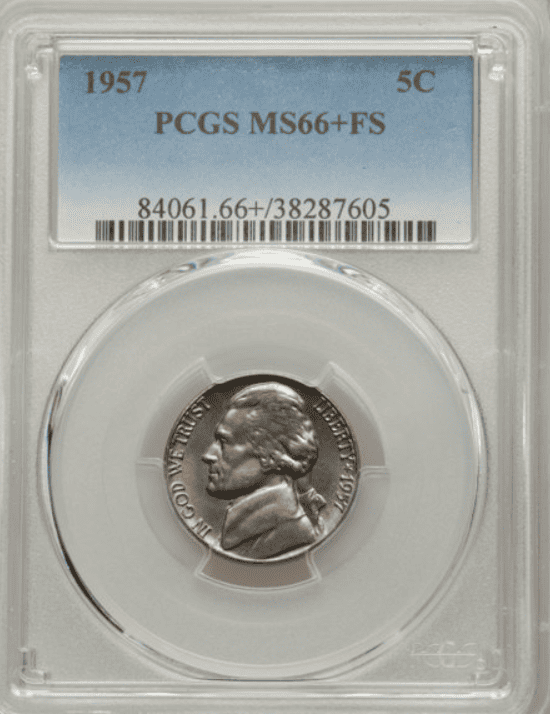
Collectors often grade Jefferson nickels based on the visibility of the Monticello stairs.
Coins in which all six steps are visible are referred to as Full Step nickels or 6FS (six full steps), while those with only five steps visible are referred to as 5FS (five full steps).
‘Full Steps’ is not an error; it’s a sign of a well-struck coin. However, the numismatic community considers such coins a variety worth paying attention to when collecting Jefferson nickels.
A 1957 Full Step nickel from the Philadelphia or Denver mints can fetch as much as $150. However, there have been instances where this coin has been worth thousands of dollars.
For example, according to the Professional Coin Grading Service (PCGS), in 2006, a collector paid an eye-watering $4,303 for a Full Step 1957 nickel graded MS66.
1957 Re-Punched Mint Mark Nickel Error
The re-punched mint mark error is seen on 1957-D nickels.
The primary mint mark D is struck vertically, and the secondary mint mark D is struck on top of the first D, resulting in an overlapping filled-in mint mark.
The more visible the error, the more valuable it is. You can expect between $15 and $50 for a visible 1957-D re-punched mint mark nickel error.
1957 Doubled Die Nickel Error
The doubled die is another common error among Jefferson nickels.
This minting anomaly occurs when the working die strikes the design elements multiple times onto the planchet at slightly different angles. This results in the design elements overlapping and revealing some doubling.
In some cases, the doubling is visible, while in others, it is subtle. If the doubling is visible, your 1957 nickel with a doubled die error will be more valuable.
Doubling typically occurs on the reverse inscriptions, particularly FIVE CENT, and MONTICELLO. Meanwhile, on the reverse, check for doubling just below Jefferson’s eye.
A 1957 doubled-die nickel error can fetch up to $50 if the doubling is visible and around $10 for subtle doubling.
1957 Off-Center Strike Nickel Error
An off-center strike error occurs when the working die strikes the design elements away from the coin’s center due to a misalignment of the die or planchet.
Collectors use percentages to evaluate the value of an off-center strike error. For example, coins in which the design element is struck 2-5% off-center are not considered as valuable as those with a 50% off-center strike.
While a 1957 nickel with a 2-3% off-center error may bring in about $5, one with an off-center strike of 50% or more can fetch at least $50.
Also read: 14 Most Valuable Nickel Errors Worth Money
Where to Sell Your 1957 Nickel ?
Now that you know the value of your coins, do you know where to sell those coins online easily? Don’t worry, I’ve compiled a list of these sites, including their introduction, pros, and cons.
Check out now: Best Places To Sell Coins Online (Pros & Cons)
FAQS
Is there anything special about a 1957 nickel?
One thing you will notice with the 1957 nickel is that the star between LIBERTY and 1957 on the obverse is enlarged. The mint enlarged the star only in 1957 and 1958, making these nickels fairly special. After 1958, the Mint reverted to using the regular-sized star, given that the large star had to be engraved by hand.
Where is the mint mark on the 1957 nickel?
Only the 1957 nickels minted at the Denver facility have a mint mark. You can find the mint mark D on the reverse at the furthest wall to the right. Coins struck at the main mint in Philadelphia do not have a mint mark on the obverse or reverse.
How much silver does a 1957 nickel have?
Jefferson nickels do not contain any silver. These coins might have a silver-ish appearance, which can be attributed to the nickel metal part of the coin’s metallic composition. Your 1957 nickel comprises 75% copper and 25% nickel.

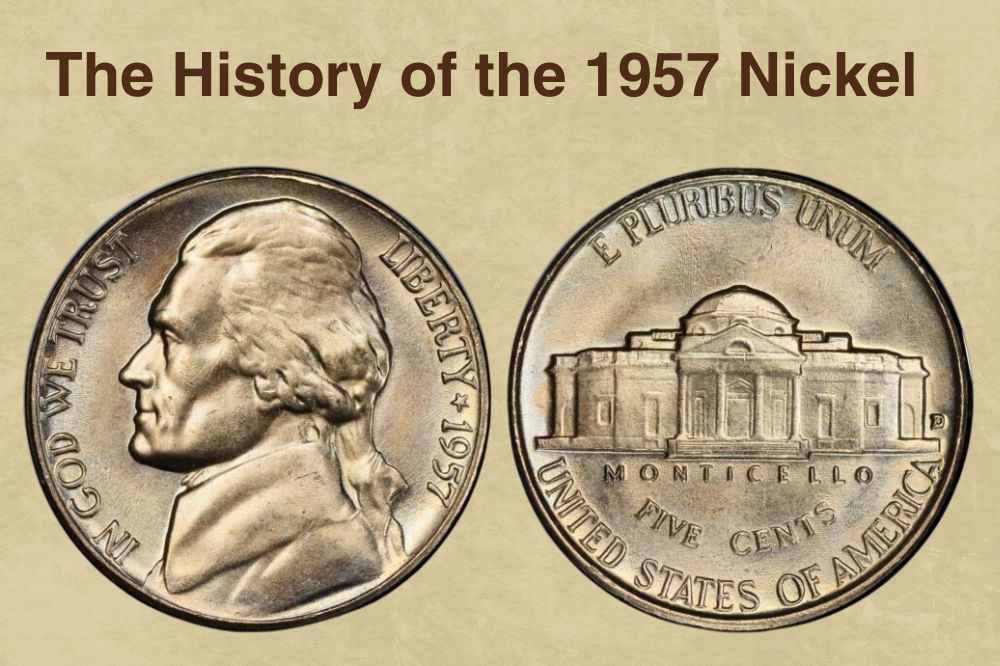
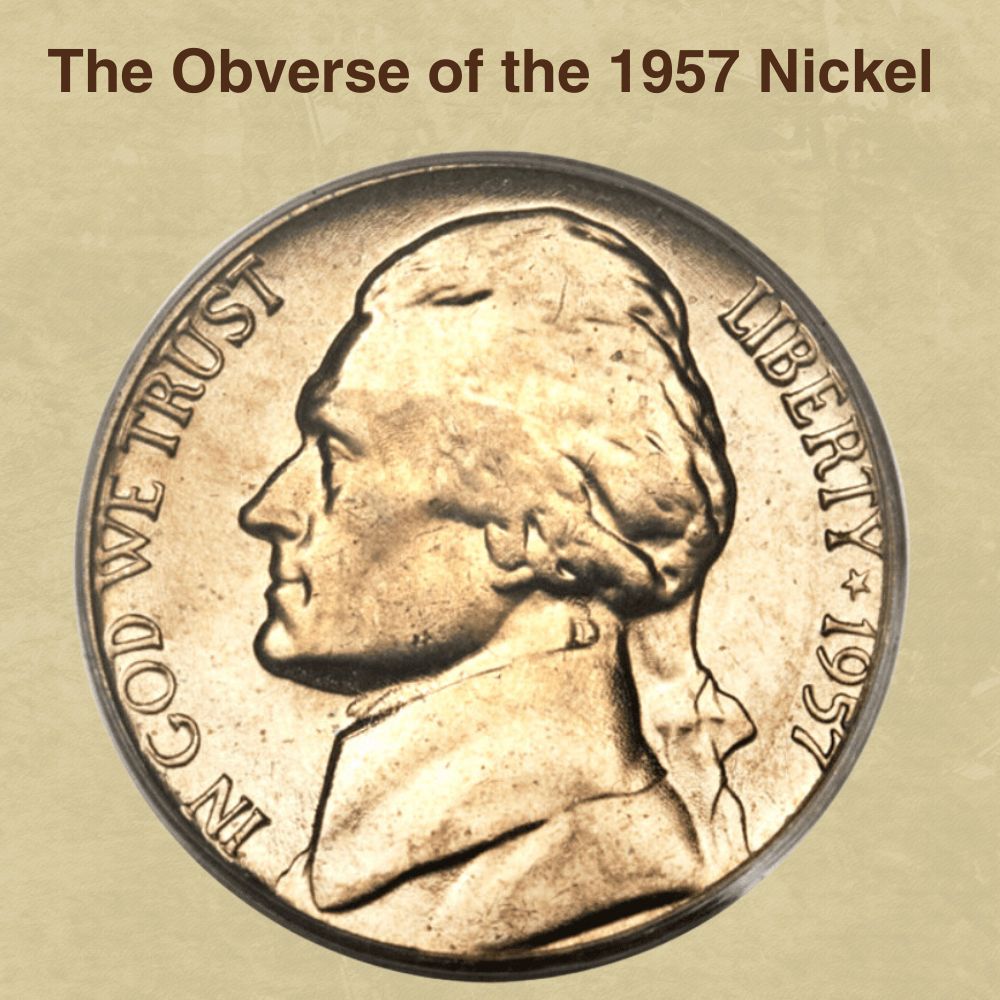
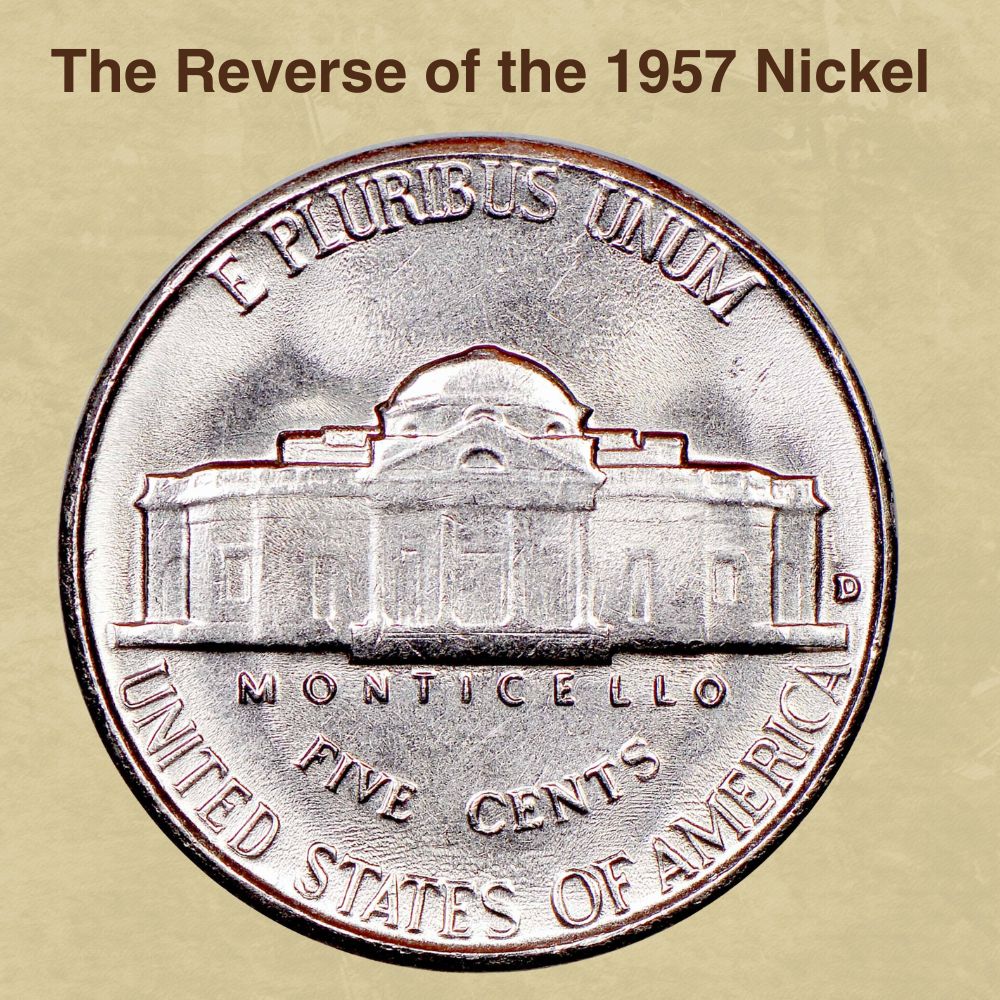
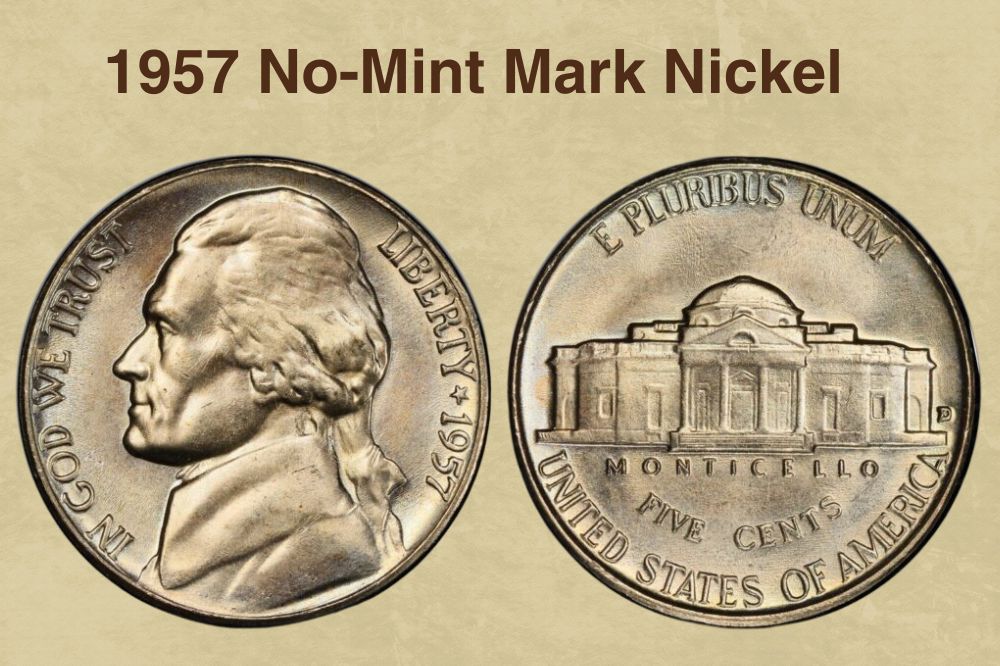
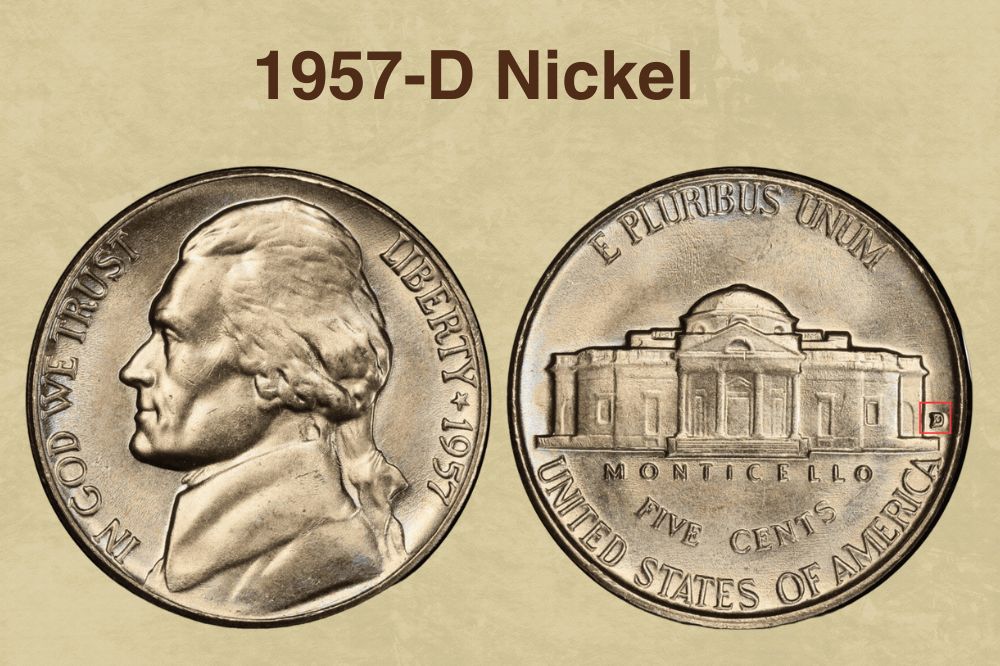
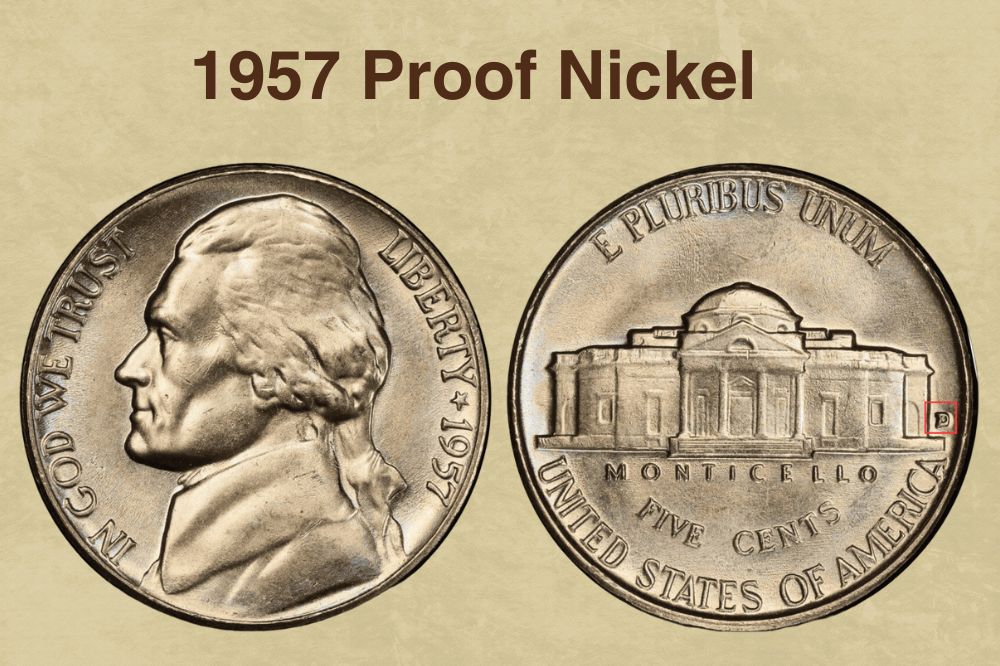
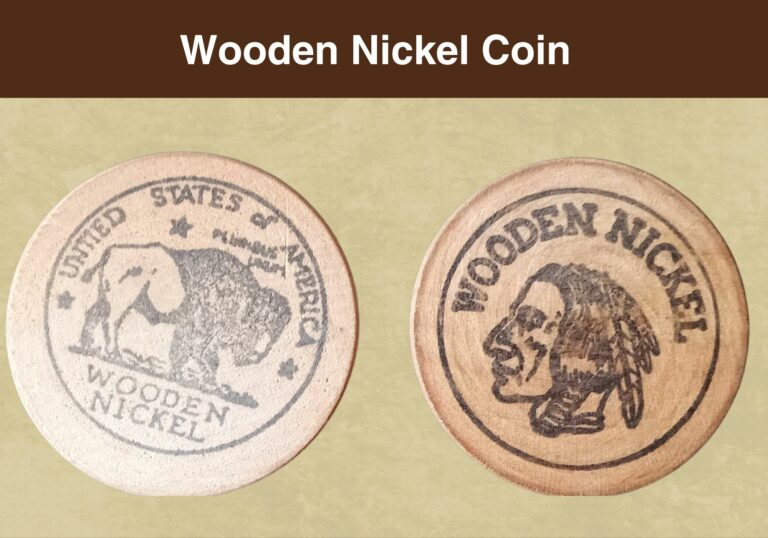
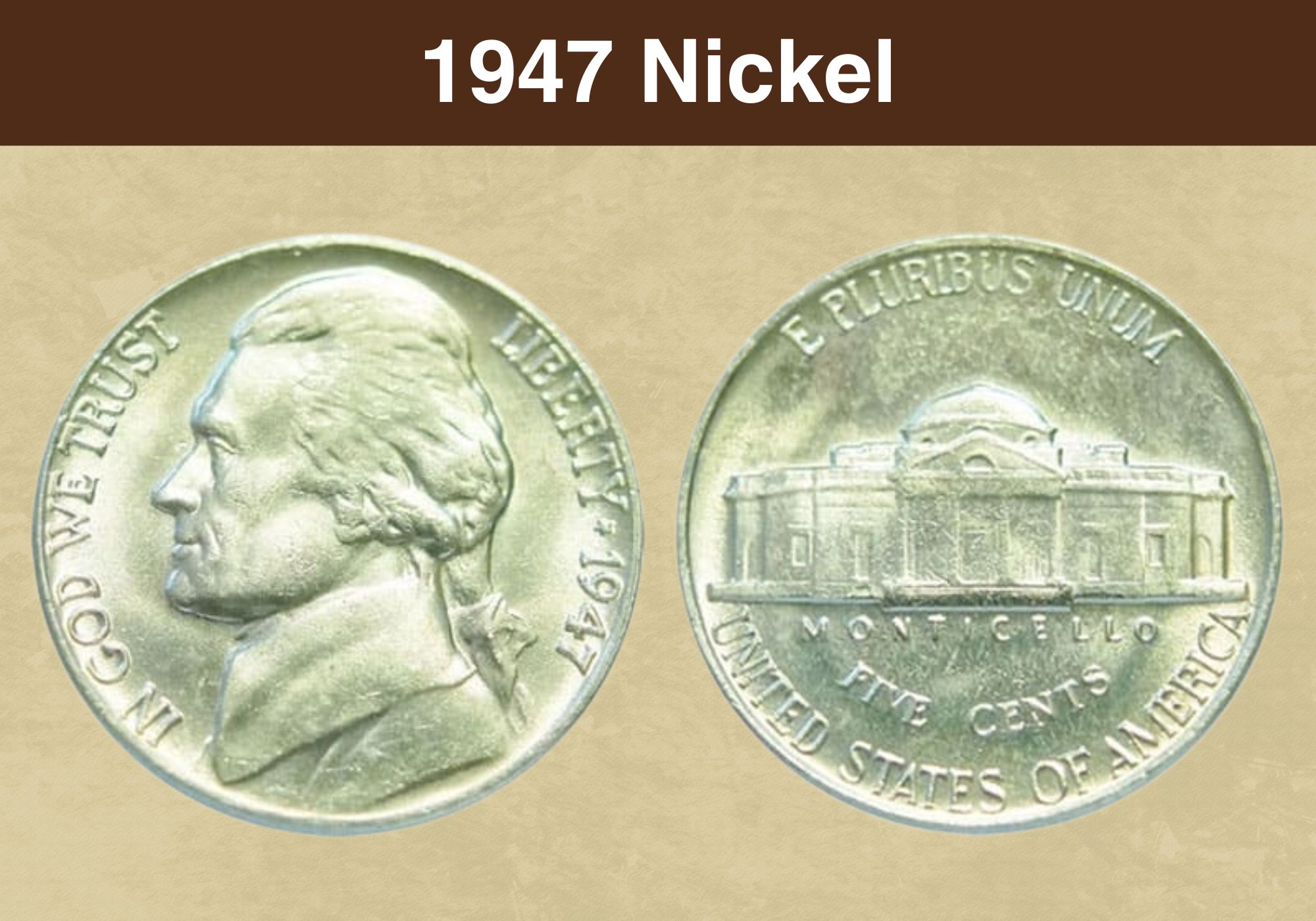
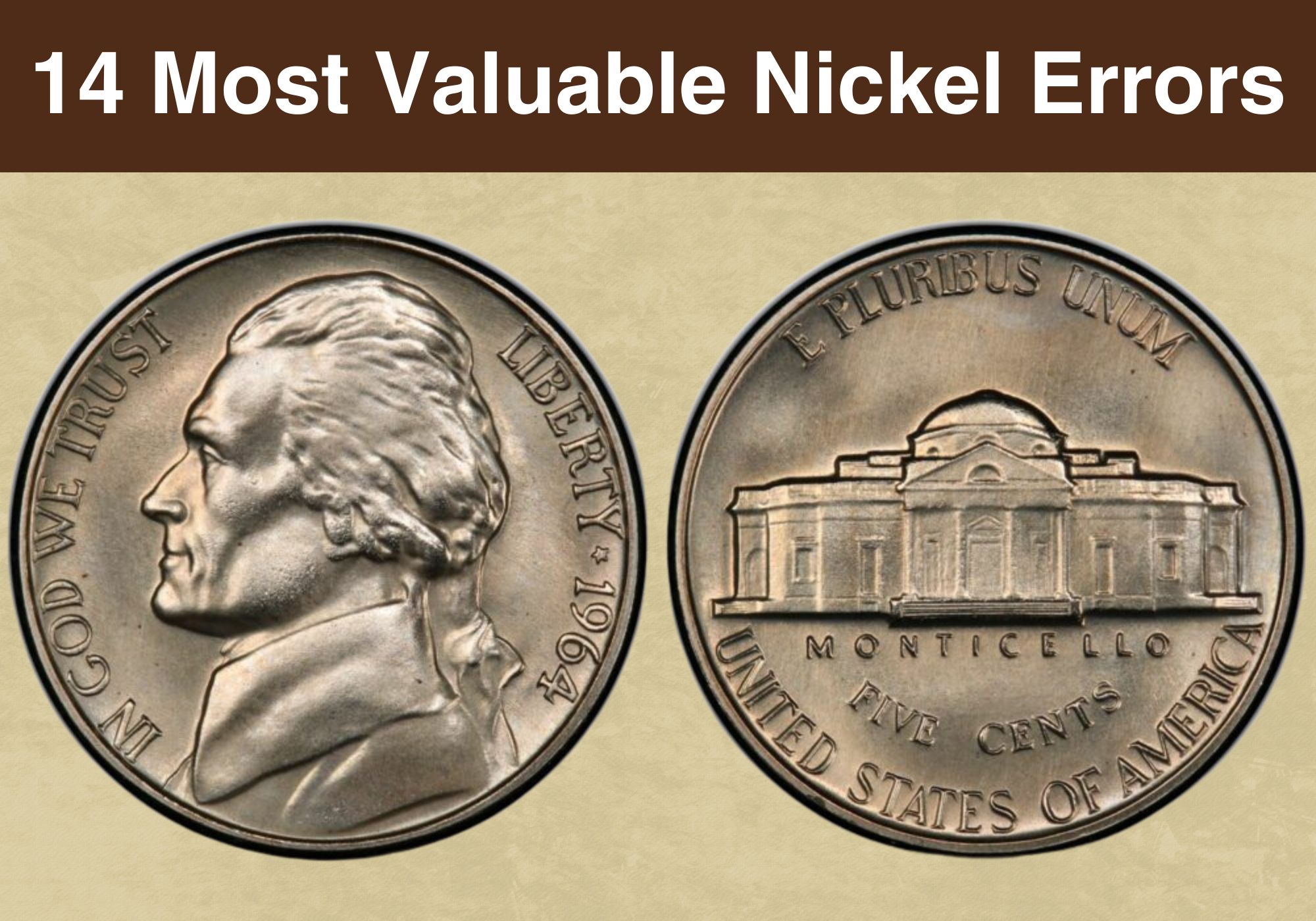
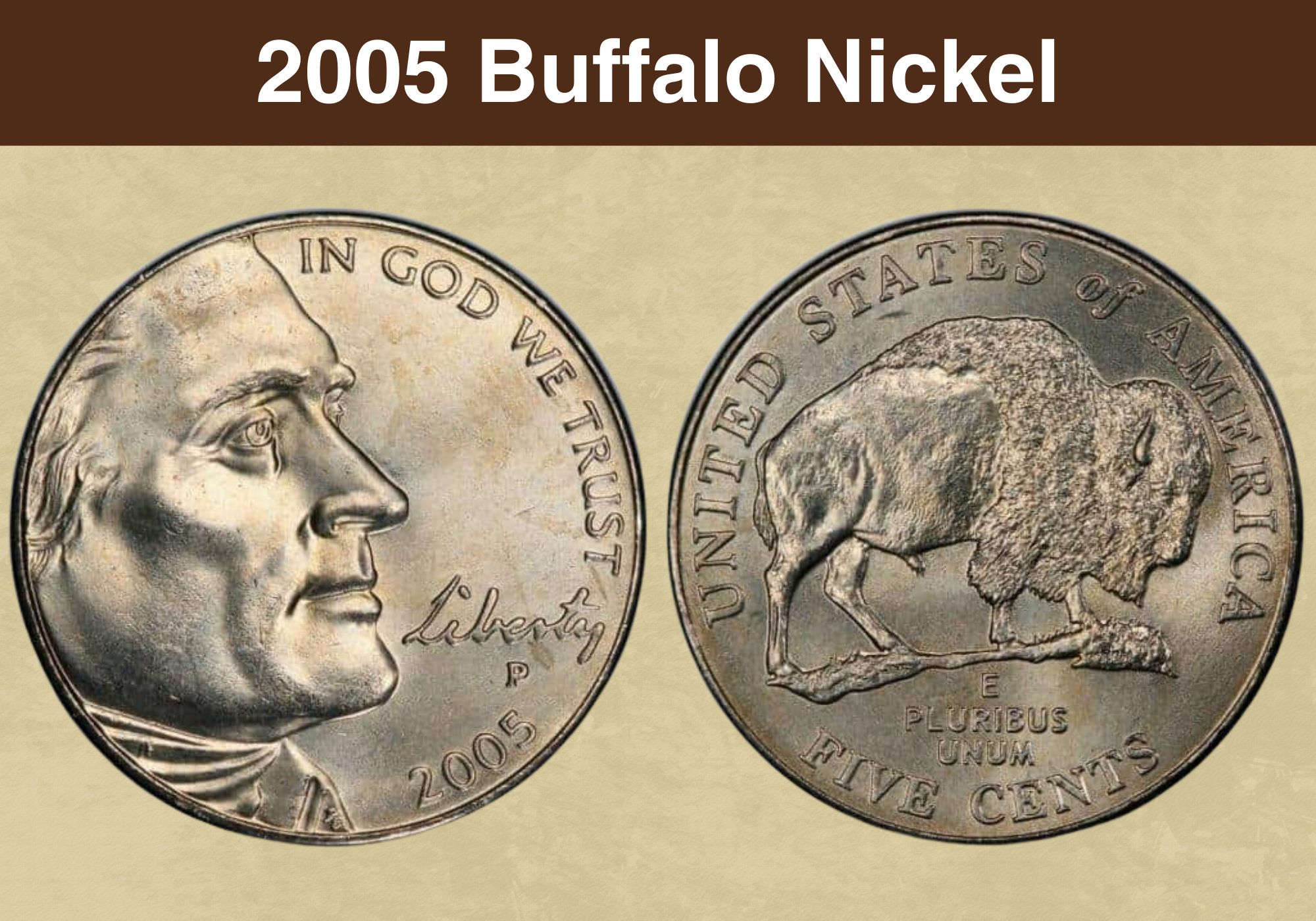
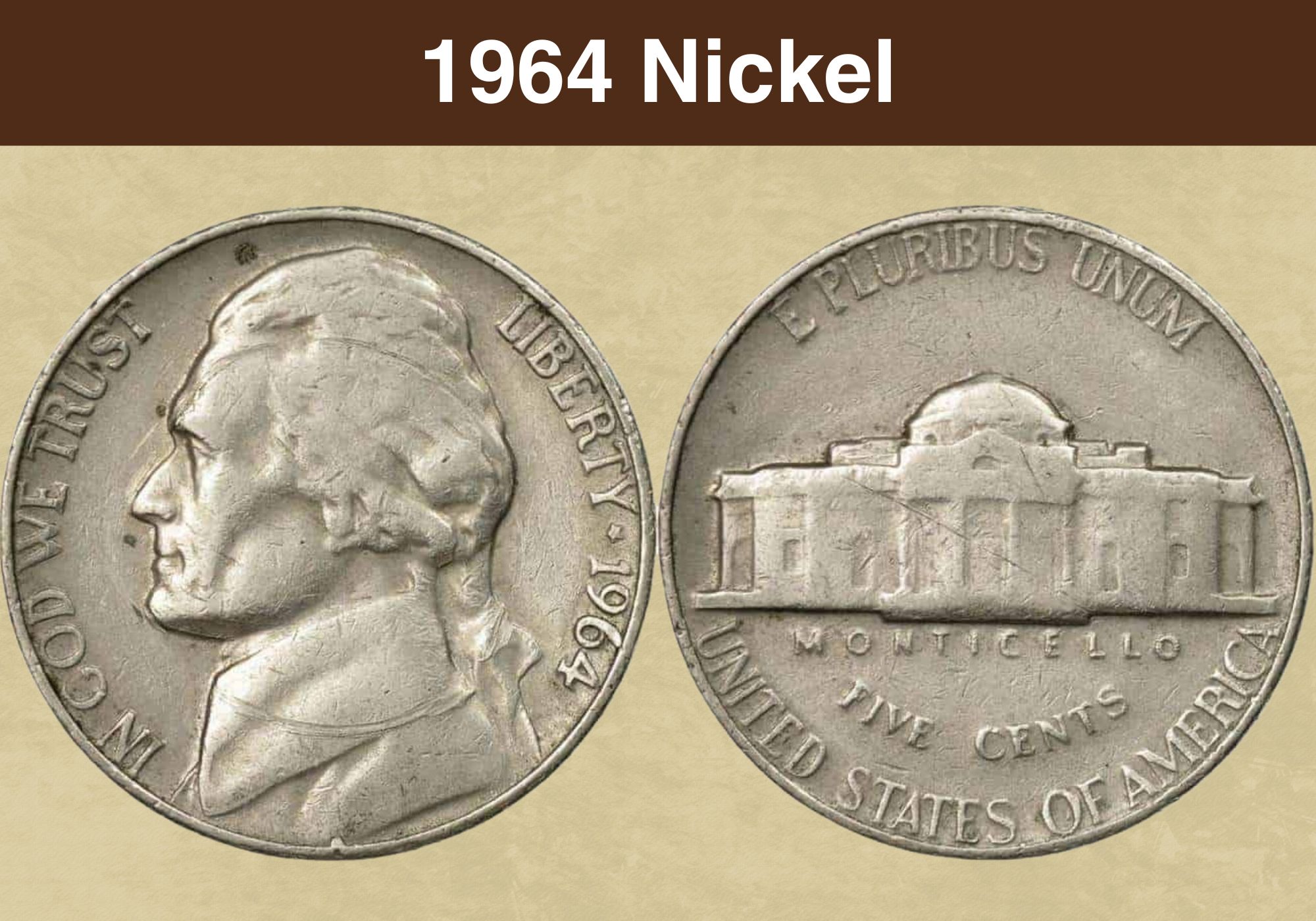
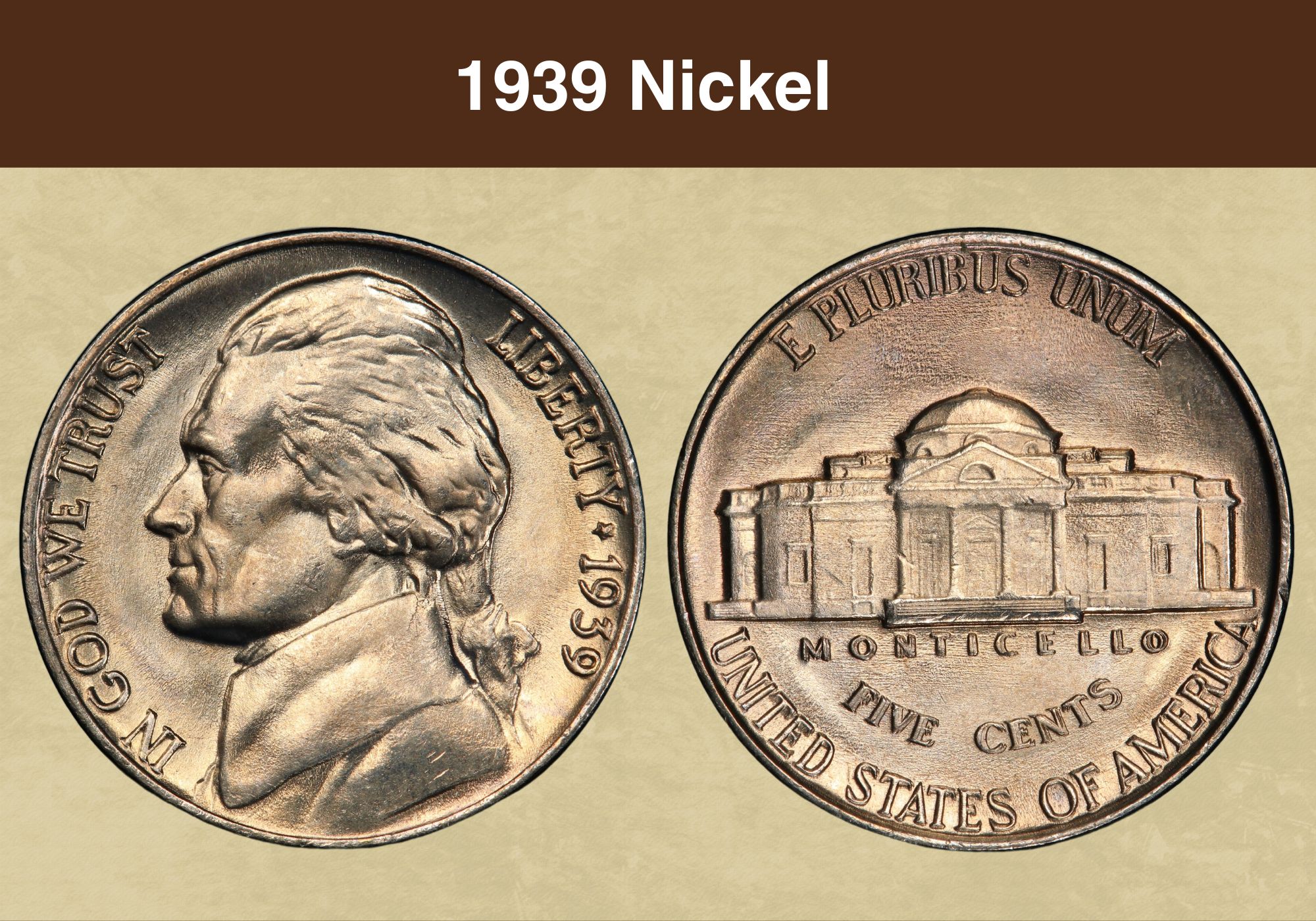
i did not see on your error list the 1957d double die clipped Nickel.
do you know if they or common or of interest to collectors?